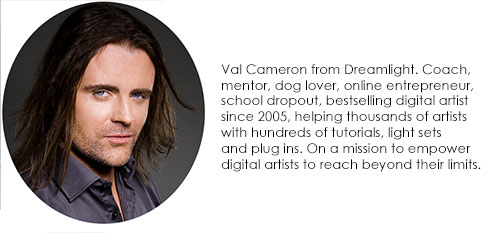DAZ Studio Iray DeNoiser Put To The Test
Nvidia’s Iray render-engine is breathtaking. It’s fast, at least when you’re using Nvidia cards, and it looks great too. However, some situations, like darker areas or emissive surfaces (surfaces that emit light), can increase rendering time quite dramatically, and produce lots of noise.
Since version 4.11, DAZ Studio includes a built-in DeNoiser feature that automatically removes noise. I’ve been testing this new feature for a couple of weeks now, and really putting a lot of pressure on it in various situations, scenes, and light conditions:
I know you want a simple yes or no, but the answer is a little more advanced than that. See, I don’t believe features or functions are just good or bad. They’re usually both. It depends on from what angle you’re looking at it. In today’s video, I’m first showcasing the new Iray DeNoise in a light and fast scene, and then put some heavy weight on it, making it endure a 2 Million polygon scene, with lots of emissive surfaces and additional lights on top of that.
For this test, I’m using two RTX 2080 Ti cards, so they’re really fast on their own, but that doesn’t really matter. There are some really cool benefits from the new DeNoise function regardless of what graphics card(s) you have, and also, a surprising downside… Comment below what you think of the new function and also what you liked about the video!
Keep tweaking!
-Val
P.S. Don’t have DAZ Studio yet? Download it for FREE here…


Something I’ve noticed with the denoiser, is the smear-effect, such as the ones your get on some JPG-images that are compressed too hard. Also, when I’ve tested, say on a Genesis 3 or 8 Female model with, say, nail polish, it gets black, no matter the color I’ve chosen. As you pointed out, it surely must be great for previews and animation (haven’t tried animation in Daz Studio yet though). But I think one should exercise caution with the denoiser since you might get unwanted results. To me it seems the same compression technique as with JPG or JPEG. Also skin and pores are gone in those images I’ve tried using denoiser. That’s what creates realism if you ask me. If I have to chose between details and compression, which I believe denoiser is all about, I’ll chose details and suffer the long render times.
Yeah, they might indeed be such effects now and then. It also depends on the materials it renders, how “empty” things look like or what patterns it renders…